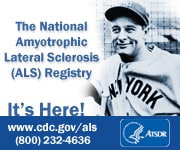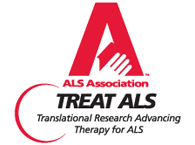
Competition vs collaboration: The present parallel and competing organizational model engenders and promotes high overhead management structures that eat up resources that can be best diverted to patient services. In my opinion this has led to an unhealthy and spurious situation where defending the management structures has become a dominant underlying activity, rather than a continuing honest self assessment process.
Research for “The Cure”: When one looks at the overall research processes now in place and the lack of any substantial results for therapies to slow, stop or reverse progression it is clear that the present process has come up blank. Not even minor results have emerged and we are in a typical research loop of the only results being we need to do more research.
I sense that major organizations serving the ALS community have comfortably settled into a philosophy of promoting a cure for this horrible disease as the primary focus. When these organizations use a changing cast of patients in various stages of progression to unlock the wallets of the public, it makes me think of the flies on the poor little African children approach.
Cure an illusion?: A cure, particularly with the dearth of results or therapies, seems an illusion that preys on the hopelessness of PALS not dissimilar to the approach by more nefarious scammers. The reality is that unless the system is analyzed to determine why large amounts of resources are being poured into a research model that is not working. By not working, I mean that the basic premise that seems to permeate the whole research process, to use transgenic mouse models, to screen drug candidates and to uncover the disease process has now been questioned by a lab-wide study of results.
There may not be other means by which to attach the disease, causal, process and effect except some type of animal model. But it seems alarming to one whose life has been truncated, to learn that this major weakness was not appreciated before now. And that significant amount of research resources has been directed to this questionable animal model without any appreciation of the inherent weakness.
Shotgun or high caliber gun? The weakness, it would appear to this neophyte, is made all the more serious with the seriously fragmented distribution and practices by the myriad of research organizations. I might add, research organizations vying for an essentially finite funding source where we have come to find a shotgun approach rather than a cannon has come to be the acceptable approach.
Deep assessment needed?: As was stated at the outset, it seems to do the ALS community true justice, it is time for the leadership now directing the allocation and direction of resources into patient services, education, awareness, advocacy and research to step back and look deeply and honestly at the present mode of operation.
Can we accept or should we, as a community, tolerate the duplicative high resource sucking overhead structures when and if the patient is truly at the forefront of their philosophies? It seems that we cannot or should not accept the present structure if it is not serving us as efficiently as possible or it is truly not keeping patient welfare at the core of its vision.
This is not to infer there are not substantial patient services and care programs now in place on a local or regional basis. But in a finite resource situation where competition can burn up valuable allocation and utilization of the resources, we should demand a systemic review and analysis of the processes and models now in place, fragmented as they may be.
Change good or bad?: The reaction to suggesting that all is not well in the halls of higher management in the ALS community has been defensive. In fact, it has been my experience that questioning the mode of operations is considered treasonous and to be isolated rather than embraced.
In unity, strength?: How does one inspire change, real honest introspective change? It would seem that only when the community at the center of the structure speaks with one voice, can change be a possibility. Because of the transient nature of the ALS constituency, combined with the individual challenges faced by each patient, there has not been an effective coalescing of the constituents. The result is a system that feeds on itself, rather than striving for innovative and a continuing self analysis to assure the optimum allocation and use of resources.
When one looks at the top management structures of these organizations in the form of the boards of directors, and when one appreciates the close connection to ALS by many of them, and their expertise, it is difficult to correlate the present system with the crying need for self assessment and improvement.
What would Lou Gehrig do?










1 comment:
From CBS News Sunday this morning (segment on Elton John)...
And when Elton John says "we have to help," people listen. Today his foundation, now based in New York and London, is considered among the most successful AIDS charities in the world.
"It is a small operation in America," John said. "In fact it's two people. And in England it's about 12 people including volunteers. That way, you know where the money's going."
And the money is substantial.
"We're over $150 million in given-away grants and heading towards $200 million very quickly," John said.
There's a lean business model. Are there lessons to be learned there?
Post a Comment